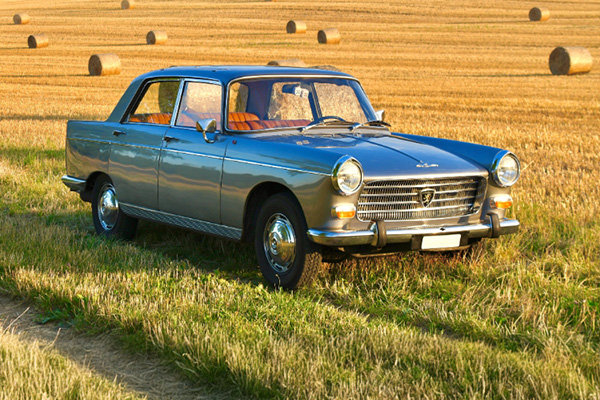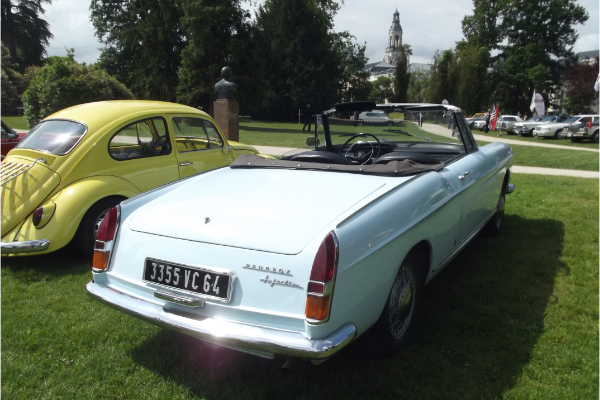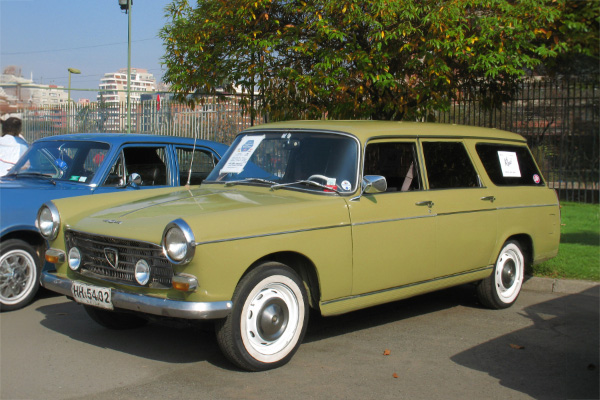Peugeot 404 – 1960 (65 years)
It isn’t flashy, nor a technical tour de force, but it was a global success embraced by Asia, Africa and Latin America. It was designed by Pininfarina and with it came distinctive tailfins for a look that was, how shall we say, cross-cultural.
When it comes to classic European cars of the 20th century, some names immediately spark recognition: the Volkswagen Beetle, Citroën DS, Fiat 500. But nestled among them, often with less noise but just as much legacy, sits the Peugeot 404 - a vehicle that quietly shaped motoring history across continents.

Launched in 1960 and produced for nearly two decades, the Peugeot 404 blended elegance, practicality, and durability in a way that made it a global success - from the streets of Paris to the plains of Kenya. More than just a mid-century saloon, the 404 was a car that transcended borders and expectations.
Peugeot turned to Italian design house Pininfarina - already making waves with its work for Ferrari and Alfa Romeo - to pen the 404. The result was a crisp, angular silhouette with a hint of transatlantic modernism. It looked refined yet robust, perfectly in tune with the aspirations of the early 1960s. Still if you didn’t like the saloon much, then you could go for the Cabriolet where the characteristics of the Pininfarina pen are easy to recognise.

Its understated grille, subtle chrome trim, and formal roofline gave the 404 a slightly upmarket look, appealing to families, professionals and even taxi drivers. The car’s timeless proportions meant it never looked dated, even as the world moved from tailfins to hatchbacks.
Beneath the stylish exterior, the 404 was no slouch in terms of engineering. It came with a 1.6-litre engine (initially carburetted, later with fuel injection - a rarity for the class), paired to a choice of manual, column-shift, or even automatic gearboxes. The car was praised for its smooth ride, responsive handling, and solid build quality.
With rear-wheel drive and a rigid yet comfortable suspension setup, the 404 struck a rare balance between long-distance touring comfort and urban agility. Peugeot’s engineers understood the importance of reliability - especially as the car’s future would take it far beyond France’s smooth autoroutes.
While the Peugeot 404 enjoyed strong sales in France and Western Europe, its true claim to fame lies in its international versatility. As production ramped up, Peugeot expanded manufacturing to Africa, Latin America, and Asia, creating a car that would become a mainstay across the developing world.
In countries such as Senegal, Kenya, Argentina, and Nigeria, the 404 became the car of choice for decades. Its tough suspension, simple mechanicals, and remarkable endurance made it a favourite among fleet operators and private owners alike. Whether carrying passengers as a taxi in Addis Ababa or hauling sugarcane in the Brazilian countryside, the 404 handled it all - often for hundreds of thousands of kilometres.
Even today, it’s not unusual to find a Peugeot 404 still plying the roads of rural Africa or stored with pride in South American garages - a testament to its engineering resilience.
The 404 wasn’t just a saloon. Over the years, Peugeot expanded the range to include, as well as the cabriolet, a coupé, estate, and pick-up. Each version retained the charm of the original but added new levels of usability.

The 404 Estate, in particular, was a pioneer in the field of practical family transport. Its generous load bay and rear bench made it ideal for long road trips or urban errands. Meanwhile, the pick-up version found favour with businesses and farmers who needed reliable transport that could handle tough conditions. Most rare and collectible today are the 404 Coupé and Cabriolet. With elegant proportions and low production numbers, they’ve become desirable classics for collectors and enthusiasts looking for something a little more under-the-radar than an Alfa or MG.
Few would expect a practical French saloon to make waves in motorsport, but the Peugeot 404 defied expectations again. In the 1960s, the car became a regular entrant - and often a winner - in long-distance endurance rallies, particularly in Africa. It achieved repeated success in events like the East African Safari Rally, one of the toughest races on the planet. Peugeot drivers, including legends like Bert Shankland, proved the 404 could outrun more powerful rivals by simply staying intact when others fell apart. Its performance in these brutal conditions solidified the 404’s status as a legendary rally warrior in civilian clothing.
The Peugeot 404’s European production ran from 1960 to 1975, with more than 2.8 million units sold. However, the car continued to be built in other markets for years after - notably in Kenya, where local assembly lasted until 1991. Its longevity speaks volumes about its core qualities: elegant, simple, tough. While it never gained the pop-culture icon status of the Mini or the Beetle, the 404 earned something perhaps more meaningful: global respect.
Today, the Peugeot 404 is cherished by collectors and vintage car lovers who appreciate its honest engineering and Pininfarina flair. Whether found gleaming at a European classic car rally or working quietly in a sun-drenched village, the 404 remains a symbol of understated excellence. It may not shout for attention, but the Peugeot 404 doesn't need to. It defined its class not by being flashy, but by being exceptionally capable, widely loved, and endlessly adaptable - a true global classic that helped put Peugeot on the world map.

COMMENT